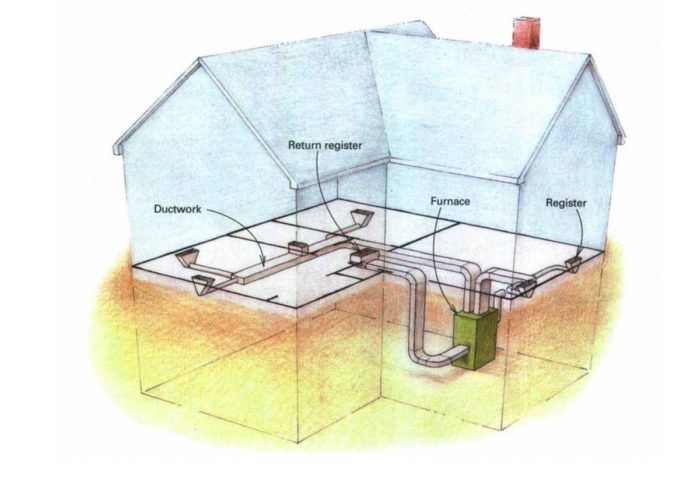A Primer on Heating Systems
You'll save money and stay more comfortable by matching the heating system to your climate, your house and your needs.

Synopsis: This is a guide to the basics of home heating systems, with clear explanations of how hot-air, piped hot water, and radiant floor systems work. Sidebars briefly discuss heat pumps and fuel choices while a glossary explains some of those mysterious acronyms that keep cropping up.
I learned to appreciate good heating systems at an early age — by growing up in a 1710 Pennsylvania log home that lacked one. I remember huddling around our oil-fired space heater on winter nights to soak up as much warmth as possible before dashing upstairs to the small corner room my brother and I shared. I even have a distinct — though no doubt exaggerated — memory of a particularly frigid winter night when firewood brought in at bedtime still had snow on it the next morning.
I still live in an old home, but I’ve worked hard to insulate and weatherize it against cold Vermont winters. I also spent a lot of time choosing the right heating system to make certain it’s a lot more comfortable than my boyhood home.
This article should help you to establish priorities and figure out what questions to ask your heating-system designer or contractor when choosing a heating system. I’ve tried to provide a broad overview, addressing basics of selection and fundamental decisions about heat-distribution options. Along with providing comfort, other goals that may come up when selecting a heating system include efficiency and size.
When it comes to heating-system design, there are two primary areas of decision-making: how to produce heat and how to move the heat where it’s needed. The latter decision is usually more important and should be made first.
Forced air heats the fastest
Forced air is the most common type of heating system in North America. It accounts for 62% of all home heating, according to the U. S. Department of Energy. A gas-fired or oil-fired furnace, an electric furnace or a heat pump is used to generate hot air, which is then circulated throughout the house via ducts and a fan (air handler). Warm air typically is delivered through floor registers. Air returns to the furnace through centralized return registers in the house.
Advantages of forced-air heating systems include rapid delivery of heat throughout the house and the potential for integration with other climate-control systems, such as ventilation, humidification, dehumidification, filtration and air conditioning. On the downside are noise from the air handler and ducts, leakage through poorly sealed ducts, increased air leakage in the house resulting from pressure imbalances and the potential for drafts generated by air circulation. Also, it is difficult to set up zones that allow you to heat parts of the house separately.
It’s important to plan carefully for ducts during the design of the house. Registers should be situated and the blower sized so that homeowners will not notice airflow. In poorly insulated houses, this may be difficult because the system often has to be designed to throw warm air across a room to offset heat loss at windows.
For more photos, drawings, and details, click the View PDF button below:
Fine Homebuilding Recommended Products
Fine Homebuilding receives a commission for items purchased through links on this site, including Amazon Associates and other affiliate advertising programs.

A House Needs to Breathe...Or Does It?: An Introduction to Building Science

Get Your House Right: Architectural Elements to Use & Avoid

Pretty Good House






















